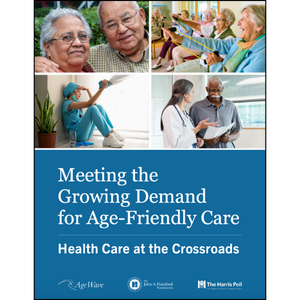Fee for value payment models: Preparing for tomorrow’s reality
The Bundled Payments for Care Improvement Program (BPCI), part of the Patient Protection and Affordable Care Act (ACA), focuses on making a significant payment change in the industry; moving from a fee-for-service model to a fee-for-value, bundled payment, where providers are paid for a care episode. In January 2015, the Department of Health and Human Services (HHS) set definitive goals and a timetable for shifting Medicare payments from fee-for-service to fee-for-value. HHS aims to have 30 percent of reimbursements run through ACOs and bundled payment initiatives by 2016, and 50 percent by 2018.
As a result, interest and momentum are increasing in the broader care community (providers, physicians, payers) in developing, testing and evolving the bundled payment model for long-term care. The continuing maturity and implementation of this model will break through the payment walls that exist today and incentivize providers to improve the coordination, quality and operations of care.
There are four models in the broader bundling payment concept, and Models 2 and 3 relate to the long-term care community. These models link payment for multiple services that beneficiaries receive during an episode of care and are designed to lead to higher quality and more coordinated care at a lower cost. Pilot programs for all four models began in 2013 as part of a five-year pilot bundling program established by HHS.
So far, participation in the pilot programs has been impressive and has proven the strategic importance of bundled payments in the changes to the payment models in long-term care.
The post-acute care models
While there are four models involved in bundled payment, models 2 and 3 affect post-acute care.
Model 2:
The care episode includes inpatient hospitalization and all related services (including long-term care) during the episode. The episode will end 30, 60, or 90 days after discharge. Bundle participants can select up to 48 different clinical episodes.
Arguably, this model is the most “far-reaching” and involves a payment for hospitals, physicians and post-acute participants. The target price for each care episode will be based on anticipated costs, as agreed to by bundle participants, for all services within the care episode. Participating providers are paid under the traditional fee-for-service model, which is followed by an adjustment process. If the fee-for-service payments for the included services exceed the target price, participating providers must repay Medicare for the difference. If the costs come in below the target price, participating providers get to keep the difference.
Model 3:
The care episode is triggered by a hospital stay, but begins with post-acute care services (SNF, IRF, LTAC, HHA). Post-acute services included in the care episode must begin within 30 days of the hospital stay and will end 30, 60, or 90 days after episode initiation. Bundle participants can select up to 48 different clinical episodes.
Target pricing and pricing is similar to Model 2, but the initial hospital stay is not part of the bundle. Only post-acute services are included in the bundle.
Capitalizing on the bundled payment momentum
The Bundled Payment Initiative is gaining momentum among providers and payers. As of February 2015, post-acute bundling activity grew significantly, particularly among SNFs. Nearly 78 percent of all episodes started in the SNF with the remaining 22 percent comprised of the Physician Group Practice (PGP), Home Health Agency (HHA), Inpatient Rehabilitation Facility (IRF) or Long-Term Care Hospital (LTCH).
Current fee-for-service model:
- Payment is defined by inputs and tied to process
- Costs are managed at the facility/episode level
- Resident care management processes end at discharge, no involvement with other care providers
Bundled payment model:
- Payment is defined by outcomes and tied to performance results
- Costs are managed at the resident level
- Resident care management processes are extended to other care settings participating in the bundle
Long-term/post-acute (LTPAC) providers participating in the pilot have already experienced the following advantages:
- Market relevance: LTPAC providers are building new relationships with the acute care community and its physicians and are being recognized as innovators.
- Collaboration: Post-acute collaboration with acute care providers and home health agencies has reduced 30-day hospital readmission rates.
- Payment playground: Providers are able to “play” with the payment models in an experimental phase before they go into effect, since the current fee-for-service payment is not impacted.
- Overall costs: Overall costs are decreasing for those pilot episodes of care.
The momentum is increasing and the federal government continues to push it forward. While this project is still formally in pilot and the ACA allows for the pilot period to be extended if necessary, HHS wants 30 percent of payments for traditional Medicare benefits to be tied to new payment models by the end of 2016. The longer-range goal is to hit 50 percent of payments for traditional Medicare benefits to be tied to new payment models by the end of 2018.
Preparing for bundled payment
What can providers not participating in bundled payment pilots do to prepare for fee-for-value reimbursement.
Enhance: Enhance your current referral relationships, which were built under the fee for service model, and start defining how you will work together in the new model.
Build: Build new relationships with referral networks who share your goals: success within the bundled payment world and mutual business building.
Technology: Identify technology that supports managing clinical care using evidence-based protocols. Bundled payment is all about quality (not quantity) and improving the coordination and efficiency of care. Providers will only be successful with technology that includes evidence-based protocols, plus advanced analytics, that’s proven to drive better outcomes.
Monitor and Engage: Monitor the models as they mature and foster relationships with fellow providers who are participating. While you want to hear about their experiences, they also want to hear ideas from you; especially ideas on transitioning from fee for service to bundled payment. You are in this together!
Partner with Experience: Partner with technology and industry leaders who have been in the industry for decades, have seen it evolve, and have changed along with it.
Opportunity: Look at this as opportunity for your organization, not “another industry regulation to deal with.”
Staffing: Assess your staffing; you may need to hire a data analyst to work with your referral networks and to ensure that your data is aligned with theirs.
Leadership: Ensure you have solid clinical leadership, who support evidence-based decision-making, in place to quickly and successfully implement changes in the care process and is open to change in processes for operational improvement and better resident care.
As the payment model pilots continue, technology and industry leaders are routinely monitoring the models based on performance and quality measures. The work of all participants in the pilot models will help providers, payers and the government evolve to a system in which residents receive integrated, superior care and better outcomes.
Louis Lenzmeier is Senior Director, Business Development for MatrixCare, headquartered in Bloomington, Minn.
I Advance Senior Care is the industry-leading source for practical, in-depth, business-building, and resident care information for owners, executives, administrators, and directors of nursing at assisted living communities, skilled nursing facilities, post-acute facilities, and continuing care retirement communities. The I Advance Senior Care editorial team and industry experts provide market analysis, strategic direction, policy commentary, clinical best-practices, business management, and technology breakthroughs.
I Advance Senior Care is part of the Institute for the Advancement of Senior Care and published by Plain-English Health Care.
Related Articles
Topics: Accountable Care Organizations (ACOs) , Articles , Finance , Medicare/Medicaid











